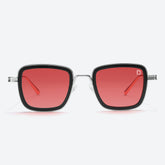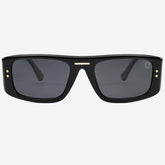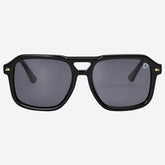What is the cost of prescription glasses?
Prescription glasses cost between $50 to $1000 and in today's world where vision care is fundamental they are crucial as they help millions see the world clearly. However, their price depends on several factors, including the lens type, place of purchase, style of frames, and insurance cost. Aside from its ability to correct vision, prescription glasses can make you fashionable.
Having a good knowledge of the cost of prescription glasses, as well as the factors that affect their price, is essential to making informed decisions that balance functionality, quality, and budget. Whether you are a first-time buyer or you want to change your pairs, this article will give a comprehensive overview of the cost of prescription glasses so you can invest wisely in your vision without necessarily breaking the banks
Factors that affect the cost of prescription glasses

To understand the cost of prescription glasses, you must consider the various elements that contribute to the final price tag. Let's take a deep dive into these factors.
Prescription Strength
Stronger prescriptions require advanced lens manufacturing processes, which increase the price. Also, Specialized lenses, such as those for astigmatism or bifocals, can make the cost more expensive.
Insurance
Your insurance plan is crucial when considering purchasing prescription eyeglasses. Insurance coverage can reduce out-of-pocket expenses for lenses and frames. It is essential you know the limitations and benefits of your insurance plan so you can make budget-friendly choices for your eyewear needs.
Frames
The cost can significantly vary depending on the material and the brand of the frames. Designer frames are typically more expensive than non-branded options. Insurance plays a critical role in eyeglass frame expenses. Most vision plans offer a frame benefit, either by covering a percentage of the cost or giving a fixed dollar amount. Being aware of these provisions allows you to choose frames that align with your style while maximizing your insurance coverage. If you are paying for your glasses unaided, always go for options that suit your budget.
Lenses
The clarity, durability, and weight of the lenses are significant price determinants. The type of lens materials used in the production of the glasses can affect the cost. Lens materials include plastic, polycarbonate, Trivex, and high-index. Additionally, the complexity of the prescription can affect the price, as higher prescriptions require more specialized lenses.
Add-Ons
Eyeglass extras, like anti-glare and anti-reflective coating and scratch resistance, improve functionality but impact costs. While these add-ons contribute to the improved vision and durability of the glasses, it's essential to weigh the benefits against the added expense to make informed decisions tailored to your needs and budget.
Location
Costs can also vary based on region and country because of the different market conditions and healthcare systems.
Retailer Markup
Independent shops often have higher prices than large chains or online retailers. This difference can be attributed to several factors, including lower volume sales, personalized service, and potentially higher quality or unique frame selections not available elsewhere.
After-Sales Services
The extent and quality of after-sales services, such as free adjustments, repairs, and warranties, can also contribute to the retail price of eyewear. Independent shops often provide more personalized service, which can be a significant factor in their pricing strategy.
What is the National average cost of prescription glasses in 2024
In the United States, the average cost of prescription eyeglasses varies significantly based on your prescription, region, frames, lenses, and brand you purchase. However, some national averages have been highlighted.
Frames: The average cost for a pair of frames without insurance is about $230.
Single-vision lenses: The average cost for a pair of single-vision lenses without insurance is around $107.
This brings the total average cost for basic eyeglasses (frames plus single-vision lenses) to approximately $337, with variations based on the specifics of the glasses you choose. If you opt for designer frames, you will pay more.
How Much Do Prescription Glasses Cost With Insurance?
Health insurance may not always cover the cost of your prescription glasses as they are prescribed as preventive measures and are not a medical necessity. However, some insurance plans can be willing to pay up to a certain amount or have a maximum coverage amount.
But, on average, prescription glasses can cost you about $120 a year with insurance. This price largely depends on the brand name, the lens of the glasses, and the location, especially for those in the United States. To accurately determine how much your prescription glasses will cost with insurance, you can do the following
- Check your vision insurance policy or contact your provider to see what benefits you have and how much they will cover for glasses.
- Compare prices and reviews from different online or in-store retailers that accept your insurance. You can also look for discounts, deals, or coupons that can lower your out-of-pocket cost.
- Select frames and lenses that suit your prescription, vision needs, and preferences. You can also opt for additional features, like lens coatings or treatments, but they may increase the price.
- Review your order and confirm that your insurance information is correct. You may have to pay a co-pay or a deductible at the time of purchase or later when you receive a bill from your insurance company.
How Much Should You Spend on Prescription Glasses?
The smart thing to do is to search for options that are within your budget if you don't have insurance. It will prevent being oversold on add-ons from online shops or storefronts. If you are getting a new pair of glasses, you might spend around $242, but this price depends on your location.
Aside from the glasses expenses, it's important to budget for a doctor's visit, eye examination, and refraction vision test if you're getting the prescription glasses for the first time or have a pre-existing eye condition. This charge depends on your doctor. Budgeting $200- $300 might be a good option, but you must bear in mind that this price can be higher if you have a complicated prescription or opt for branded frames.
How to select the right prescription glasses
Selecting the right prescription glasses involves several factors to ensure comfort, functionality, and style. Here's a guide to help you make the best choice:
Your eyeglass prescription should dictate the type of lenses you need. For high prescriptions, consider thinner, high-index lenses to avoid thick, bulky glasses.
There are various lens coatings available, and it's essential you choose glasses with the following coating
-Anti-reflective (AR) coating: Reduces glare from screens and lights.
- Scratch-resistant coating: Extends the life of your lenses.
- UV coating: Protects your eyes from harmful UV rays.
- Blue light blocking: Reduces eye strain from your digital screens.
- Shape: The shape of your glasses should contrast with your face shape. For example, if you have a round face, square or rectangular frames can add balance.
- Size: Make sure the frames fit well on your face. They should not be too tight or too loose, and the eye should sit near the center of the lens.
- Material: Frames come in different materials like plastic, metal, and titanium. Consider durability, weight, and allergies when choosing.
- Style and Color: Ensure you go for a color and style that matches your personality and lifestyle.
Ensure the glasses fit comfortably on your nose and ears. The temples should not dig into the sides of your head, and the nose pads should not pinch or slide down.
Your lifestyle can significantly influence the type of glasses you need. For instance, if you are active, you might need durable, flexible frames. If you spend a lot of time outdoors, transition lenses that darken in sunlight could be beneficial.
Set a budget before you start shopping. Keep in mind that while higher-priced glasses often offer better quality and features, many affordable options do not compromise on quality or style.
Check the warranty and return policies. Some retailers offer warranties on lenses and frames, as well as satisfaction guarantees.
Consult with an optician or eye care professional. They can provide recommendations based on your prescription, facial features, and lifestyle needs.
Conclusion
When you find a vendor to buy prescription glasses, you must vet them and look up their background. Do they sell FDA-approved lenses? It is also a good idea to look them up at the Better Business Bureau to see their reputation.
Here at Dollger, we're proud to say we're one of those online stores where you can get the best prices on all the hottest eyewear trends. You can purchase your eyewear without worrying about vision care insurance. You can get designer prescription glasses for $56
When you visit our site and place your orders, there's free shipment, and we offer a 30-day warranty. Our prices are already discounted and one of the best prices you'll find
Whenever you're ready to shop for your prescription glasses, remember that Dollger is here to give you the best quality possible.











